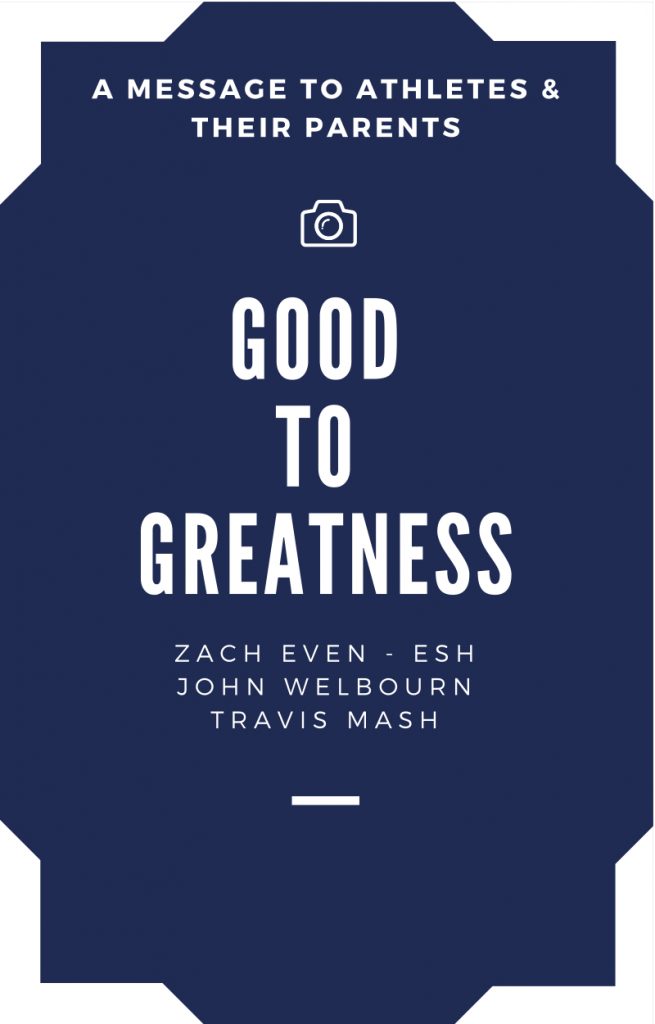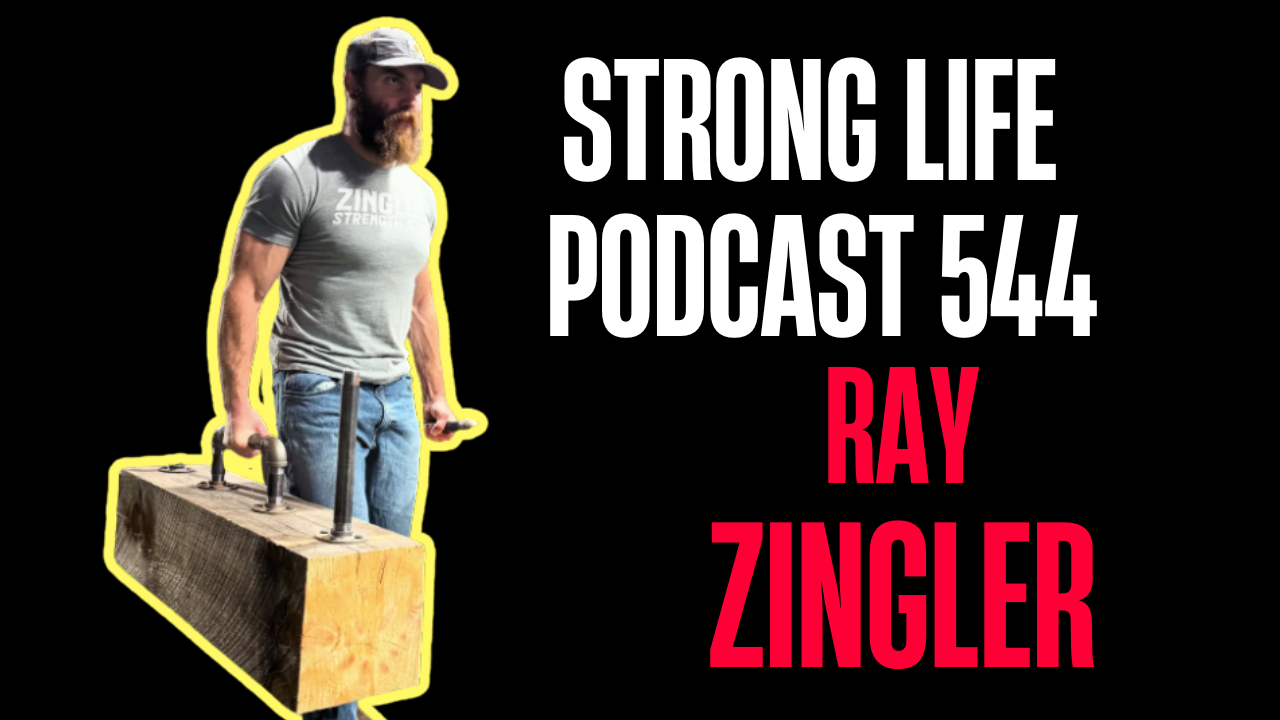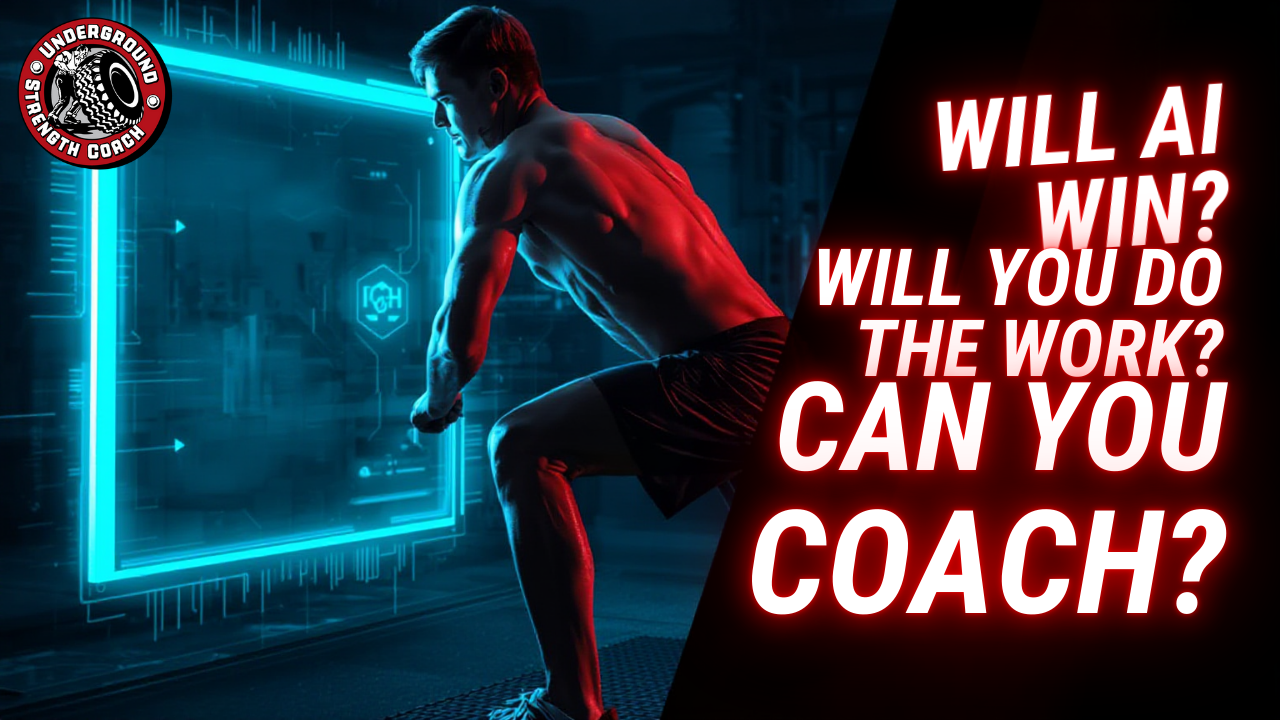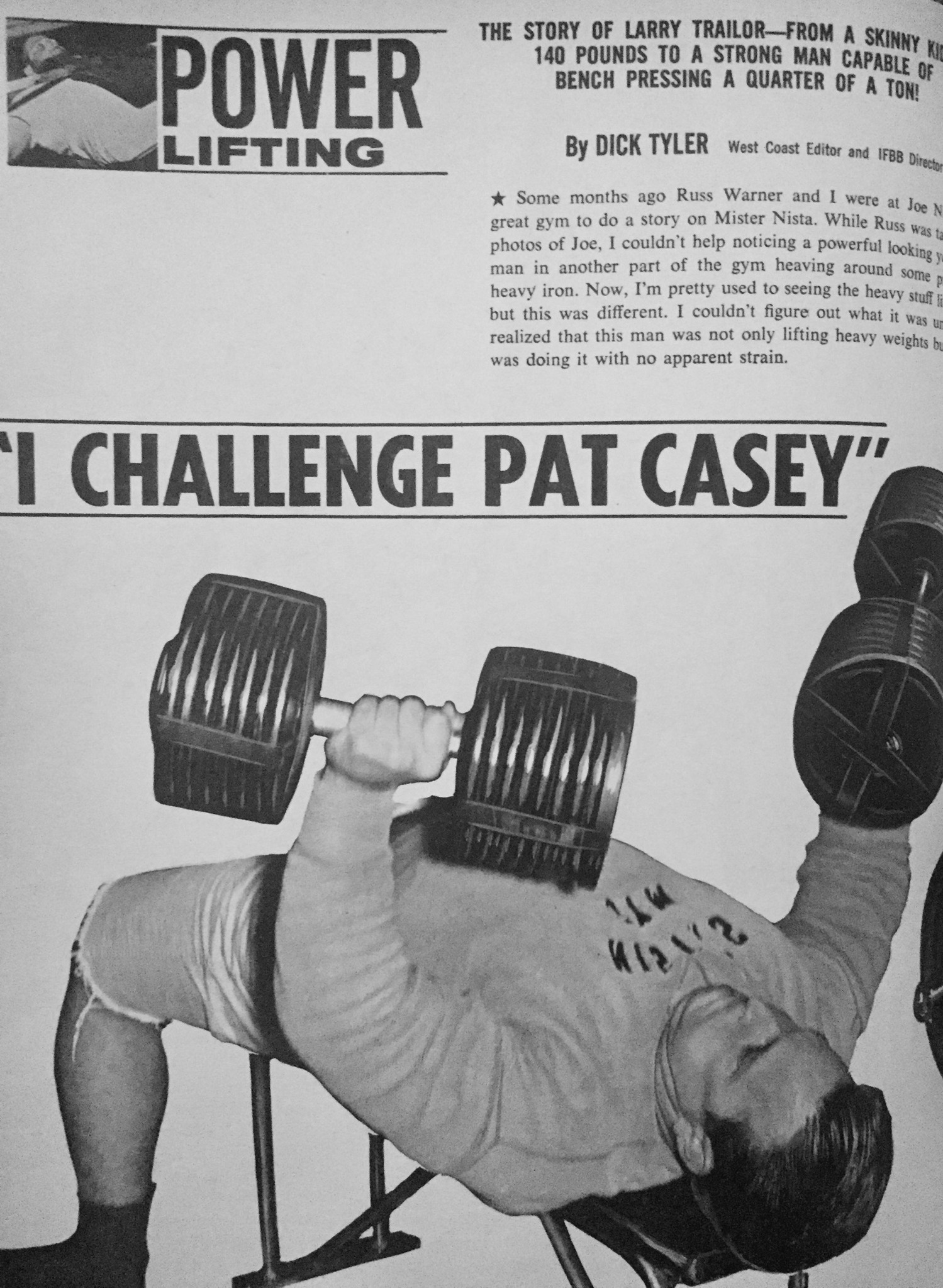Last year after a few podcasts together between myself, John Welbourn & Travis Mash, we decided we're done with the BS information regarding athlete performance.
Call it what you want; physical preparation, strength & conditioning, etc. - it doesn't matter. I'm not going to get caught up in more nonsense and add to the confusion.
We want to transform athletes into HAMMERS.
Not every athlete has the God given genetics to become a pro athlete or an Olympia, but, there are MANY controllable factors & actions that parents and athletes CAN put into play to give you the BEST advantage possible over your competition.
I uploaded this entire e book into The Underground Strength Academy HERE.
And below, I share some tiny excerpts from the e book so you can get the gist of some of our information.
Excerpt from John Welbourn
After my first year of football, I knew I could be much better than what I was displaying. Realizing the coaching at the high school level was mediocre at best, I really felt that I needed help. I turned to the one person that had supported me from day 1, my brother Ed. He was an all conference football player and came home every summer to work to pay for school.
Every morning before work, we would hit the field to run, work drills and learn the art of football; important skills like learning to strike with your hands, how to slide your feet and play with knee bend. All of these skills are fundamental to playing the game but might be something high school level coaches gloss over or fail to communicate the importance to their athletes.
The other thing I found that summer was the weight room. I had started to lift weights during my freshman year but was very unfocused as the program was too advanced and I failed to make the gains I could have made if I started in the right place.
Part of the reason I started offering programming for beginners, or amateurs as I call them, is because of the programming that was first offered to me.
Training is a journey and every journey needs a beginning, a middle and end. At each phase of the journey, an athlete needs the correct programming. Seeing the shortcomings of my own experience, training that resulting in injuries and the lack of progress still haunts me. I do my best daily to make sure no young athlete falls into the same trap I did.
I knew the football skill part would take care of itself with more opportunity to play the game. But where I knew I could make strides above others was in the weight room and track by getting stronger and faster.
After my sophomore year in high school, I joined the track team. They wanted me to throw the shot put but I was interested in running track, particularly the 110 m hurdles. I knew that if I could sprint at full speed, hurdle an obstacle, land and keep running without breaking stride I would have some of the skills I needed to excel on the football field. Best part is for the first time I was being coached to sprint.
Growing up I was always fast, then around 7th grade, I got slow. At my junior high school we had to complete a timed run for a grade each week. The accumulation of those grades resulted in your final grade in Physical Education.
During 6th grade, I scored all A’s but during 7th I was scoring C’s and D’s. I was mortified and embarrassed to come home with a poor mark in P.E. so I asked my mom for help with finding someone to teach me to run. That got vetoed, as my dad didn’t see the value in it. My next option was to talk to the teacher. She told me there were make up runs after school she would allow me to do as extra credit. So each Friday after school I would run an extra credit run to help me score and make sure I got an A in P.E. I always knew I was fast but a big growth spurt had destroyed my coordination.
I found strength training coupled with track practice and speed training helped to accelerate my coordination and let me regain my speed. From that point on, I vowed to never be slow again. I knew the recipe, I just needed some luck and needed to avoid injuries.
My efforts paid off. My senior year I received over 90 scholarship offers and took 5 recruiting trips to 10 top schools. I ended up picking the University of California at Berkeley to play football and get an education. From there my training and success on the field continued. Not only did I walk away from CAL my senior year with a degree like thousands of other students; I walked away as the 2nd pick in the 4th round of the 1999 NFL Draft.
Excerpt from Zach Even - Esh
Pre to early 90’s you never heard about young athletes getting “Tommy John” surgery, repairing an ACL, or fixing a torn labrum. Coincidentally, a single sport was not played year round during this time.
Baseball was only played in the spring, and football only in the fall. Today, there is “Fall Ball”, then Spring and Summer League. Overuse injuries are becoming the norm with shoulder and elbow injuries at a rate several hundred percent higher than only 10 years ago!
The truth is, no one cares if you pitched 80 mph in 7th grade or were a state champ wrestler in 6th grade.
Coaches and parents are peaking athletes too soon. We need them to play their best ball in college, and better yet, after so they have the potential to play at a high level. Few kids are genetically gifted and healthy enough to even compete at that level, so let’s not stack the deck against them before they even get a chance to play in a major program by blowing them out early.
The hard truth is many athletes will never get to compete in college. These kids give their best years leading up to high school and either burn out emotionally, or breakdown prematurely. Only the highly motivated and/or extremely gifted athletes will survive long enough to compete in college and thereafter.
High school and collegiate basketball players should not suffer from a “jumper's knee”. This has become more common since we have kids playing AAU Basketball for 11 months out of the year from the age of 7; the damage done to their body becomes very real and sometimes irreversible.
An average kid playing Basketball for 11 months is jumping on average 100 - 200 times each practice coupled with sprints up and down the court. Multiply the 100 - 200 jumps over the course of a week, into months, and then years and it should be no surprise that the injuries will find the athletes.
In contrast, non-US coaches have athletes:
- Playing multiple sports to avoid overuse injuries.
- Playing multiple sports to develop athleticism.
- Playing multiple sports to keep athletes excited for the sport that is best suited for said
athlete according to their physical and mental features.
- Following age appropriate strength & conditioning methods started early with proper
progression through the years.
- specializing around age 1415 unless that specific sport requires early specialization
(Gymnastics, Figure Skating).
Some of the most successful high school athletes struggle upon arriving at college. They go from all star status to just another name on a roster. The fight to get back to being a star is often more than they bargained for. While some athletes are up to this challenge, an unfortunate truth is that many are not. This is where emotional preparation becomes paramount.
Age Appropriate Training
Doctors and educators have been known to tell parents “lifting weights will stunt your child’s growth”. This is a load of BS. Here is my philosophy to introducing kids to training: You need to enroll them into an age appropriate training program. Between 5 and 11, gymnastics is the ultimate form of physical preparation and will develop tremendous overall strength and athleticism. Be sure to shop around. Many programs focus on building professional gymnasts, this isn’t what you’re looking for. Look for a program that uses gymnastics training as a foundation for athletic development.
From there, expose your child to as many sports as possible. Over time, gravitate towards those your child enjoys.
Having FUN is a big key to your child’s success. It’s amazing how many parents insist on freaking out from the sidelines during the formative years. I’ve seen 7 year old champions end up hating their sport years later due to overbearing parents.
I want to see my kids achieve greatness as much as any other parent, but I must temper this with what is best for them. Which is proper coaching. Coaching that will teach positive work ethic, dedication, and best effort. Around age 11, it’s about time to emphasize a slightly more competitive spirit.
You should also be rewarding independence. Encourage calisthenics. Strive to have your kids train on their own when nobody's watching. A lack of independence could inhibit their ability to overcome obstacles on their own; not only in sports but in life.
At The Underground Strength Gym, we follow a simple model first used by the Russians. In the early developmental years, we utilize bodyweight gymnastic movements to build strength and body awareness. The athletes use light resistance bands, light sleds and light medicine balls. In middle school, we add light kettlebells.
Don’t worry, decades ago 7 year old kids labored on farms for 12 hours a day and carried heavy buckets, moved heavy objects, and performed manual labor and they turned out just fine. You could even say that this was our earliest form of “functional” training.
Excerpt from Travis Mash
What it Takes
Parents, are you curious what it takes to make your son or daughter like one of my other great collegiate athletes or champion weightlifters? Well, if I were to work with your child, they will receive the same opportunities as my champions.
The question then becomes, “will your child take advantage of these opportunities?” Sadly, most will not!
Here’s a plate of opportunities. Is that it? Is it that simple? Of course not. Like a great meal, that’s only one part of an entire recipe. Let’s take a look at the other “key ingredients” to making good athletes great:
1. Your kids must become “Masters of the Mundane”. The little things, like consistent sleep, nutrient dense meals, stretching, giving their best on every rep of every set in the weight room, and prioritizing their life are what matter most
They need to sleep right. That means 810 hours per night, despite parties and dates. They need to eat right. That means they don’t skip meals, nor are they careless about what goes in their mouths. They need to stretch. That means they stretch the muscles that are tight. They work on stabilizing the muscles that are weak. They don’t cheat reps or sets in the weight room! That means that they run through the line, they don’t slow down before! They will do 12 reps when I asked for 10.
Lastly, they prioritize their life! If the family goes on a vacation, they do everything I mentioned above while traveling.
At Mash Elite Performance, our coaches live and breathe Exercise Science. Their cumulative knowledge is easily accessed via MashElitePerformance.com in the store section.
2. Great athletes set goals! All of my greats have concrete goals complete and plans written down and committed to memory. We teach them to dream it, write it down, formulate a plan, commit, and follow through.
Beyond a sport, goals extend to all of their dreams. Cade Carney, playing football at Wake Forest University, set goals for everything. While en route to one of his combines, he would be setting goals for his 40 yd dash and vertical leap.
Nathan Damron‘s goal is to beat all the Junior American Records in the 85k weight class. He must hit specific benchmarks to even have a chance. He is consistently chopping away at those.
3. Athletes that are destined for greatness do not need to be pushed! My goal as a strength and conditioning coach is always to teach them to push themselves. I find out what drives them, then get them to visualize reaching that very thing. Cade Carney is arguably one of the best athletes I have ever coached. He is considered one of the top football recruits in his class, and I can tell you that no one had to push him. This kid is driven. An athlete should strive to be selfmotivated. It was my job to guide him further than he thought was possible, he had his own motivation.
My team of weightlifters is one of the best, most determined teams in America. Believe it or not, my main job is to convince them to rest! I don’t have to do a lot of motivating and just focus on guidance.
4. Genetics! This one’s on you, parents. Be realistic with what you have. The truth in many sports is that size matters. A 5’7” football player must be twice as good as the player who is 6’3” to achieve greatness. I’ve seen undersized athletes work hard and earn scholarships. They just have to be a lot better than the bigger ones.
However, here is the hard truth. If you are 5’7”, run a 5.3 second 40yard dash, and are playing cornerback, achieving greatness in the sport of football is probably not in the cards. That’s ok! There are other sports besides football and other gifts besides size. Your kid just has to find the right fit.
Michael Waters was a two time state champion in North Carolina. While he was a very small athlete and was not fast on the football field, he was lightning quick on the wrestling mat. He found the sport that matched his genetics, and he became the best at it.
===============






